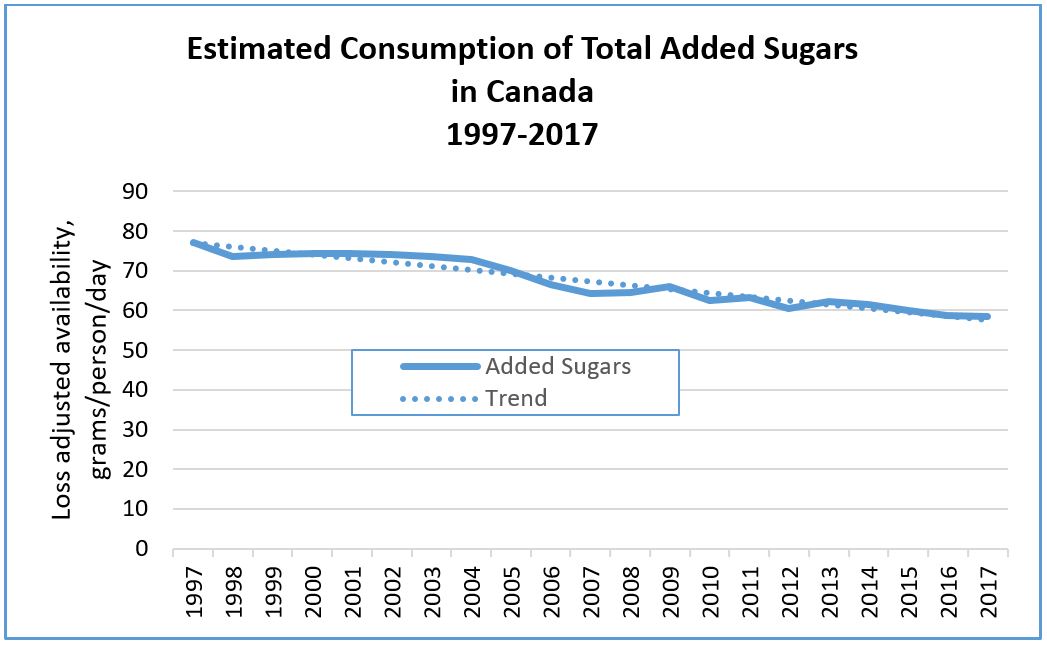Whats New
Update on estimated added sugars consumption in Canada
On May 30, 2018, Statistics Canada released loss-adjusted food availability data for 2017 (CANSIM). Food availability data that is adjusted for loss and wastage provides an estimate of average consumption in the population. Data for sugars, syrups, and soft drinks can be used to estimate the availability of added sugars in Canada and serves as a proxy to monitor trends in per capita sugars consumption. This loss-adjusted availability data from Statistics Canada shows a long-term declining trend in estimated average added sugars consumption in Canada, with a 24% per capita reduction over the past 20 years.
Figure 1: Estimated Consumption of Total Added Sugars in Canada: 1997-2017.
The availability data published by Statistics Canada includes adjustments made to account for waste and food loss. This happens at all stages of the food distribution chain, and includes unintended spills, spoilage, or discarding of foods at the retail and consumer level. A 2015 Agriculture and Agri-Food Canada report indicated that there is an average food waste of ~31% across all food categories, and these levels are variable between groups. As a proportion of the available supply, the levels of waste were highest for added sugars and syrups (~41%) and fish (~39%), and lowest for nuts and legumes (~15%) and juice (~16%).
The best estimate of actual food consumption is obtained through Canadian Community Health Survey (CCHS) data. The most recent sugars intake information comes from CCHS 2004, which reported the average intake of total sugars to be 110 grams/day (21% of energy) [Langlois et al, 2011]. From this information, the average consumption of added sugars was estimated to be 51 grams/day (11% of energy) [Brisbois et al, 2014].
Health professionals and interested organizations eagerly await the publication of the 2015 CCHS dietary survey data, for more current information on sugars intakes. The publication and release of the CCHS data will allow for assessment of trends and changes in eating habits, food consumption, nutrition, and health compared to 2004.
References:
- 2015 Agriculture and Agri-Food Canada Report. Agrifood-2015.pdf
- Langlois K, Garriguet D. Sugar consumption among Canadians of all ages. Health Reports. 2011;22(3):23. https://www.ncbi.nlm.nih.gov/pubmed/22106786
- Brisbois TD, Marsden SL, Anderson GH, Sievenpiper JL. Estimated intakes and sources of total and added sugars in the Canadian diet. Nutrients. 2014;6(5):1899-912. https://www.ncbi.nlm.nih.gov/pubmed/24815507
Additional Resources:



